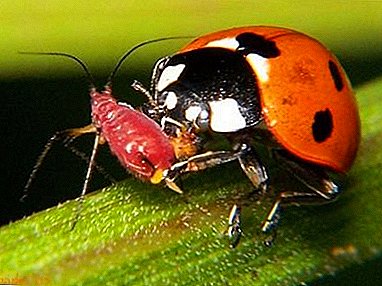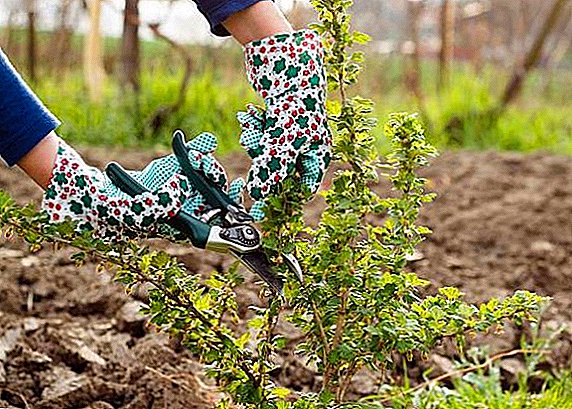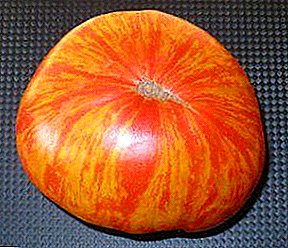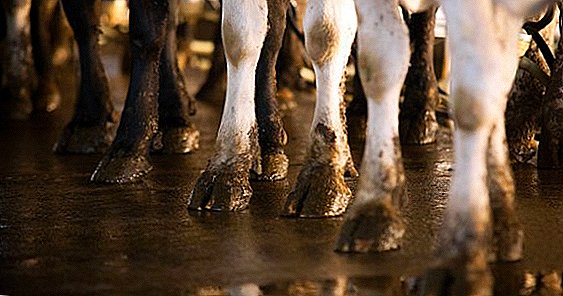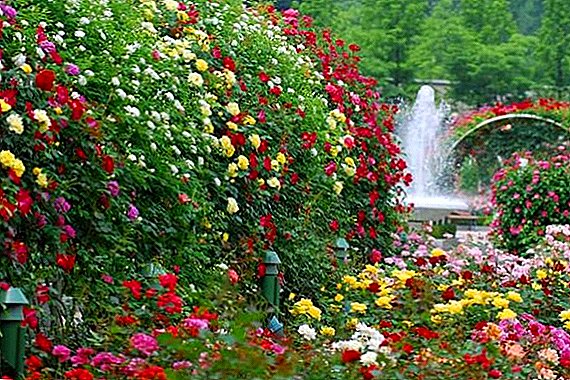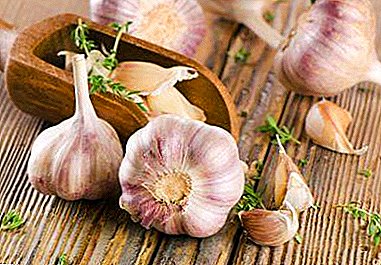 Many gardeners and gardeners, who previously used sawdust, peat or greens in the form of a mulching material, eventually switched to agrofibre. This covering material is used not only by large agrarian companies, but also by small farms. Today we will learn about what is agrofiber, discuss its use, and also examine the intricacies of operation.
Many gardeners and gardeners, who previously used sawdust, peat or greens in the form of a mulching material, eventually switched to agrofibre. This covering material is used not only by large agrarian companies, but also by small farms. Today we will learn about what is agrofiber, discuss its use, and also examine the intricacies of operation.
Use cases and types of material
We begin with a discussion of possible types of spunbond (another name for agrofibre), depending on which use cases vary.
Black
Black agrofibre is used in the same way as regular mulch. That is, after you have laid the covering material, absolutely nothing extra will grow under it. Even the most enduring weeds will not be able to get the amount of light they need to grow.
Learn the nuances of planting strawberries under covering material.
 Use black spandond as follows:
Use black spandond as follows:
- before planting or seeding, the treated area is completely covered with material;
- then, in the places of planting or seeding, free holes are made so that the plants have access to light and heat.
It is used absolutely for any crops and ornamental plants.  The point is that the sun does not fall on the covered ground, but it is still well moistened, receives heat (the material is black), it develops earthworms and beneficial microorganisms. As a result, the soil does not dry out, weeds do not appear, as well as harmful fungi that love overmoistened places (lowlands, pits).
The point is that the sun does not fall on the covered ground, but it is still well moistened, receives heat (the material is black), it develops earthworms and beneficial microorganisms. As a result, the soil does not dry out, weeds do not appear, as well as harmful fungi that love overmoistened places (lowlands, pits).
Important! Black agrofibre passes air, therefore roots will not experience oxygen starvation.
White
White agrofibre is more applicable for the greenhouse, as it has a completely different type of protection. Simply put, the white version works like a regular plastic film, but with great functionality. The point is that this option is not used as a mulch, but as a covering material in the truest sense of the word.
Hothouse method of growing vegetables will allow you to get an early harvest. However, to grow tomatoes, peppers, cucumbers, eggplants in the greenhouse, it is necessary to study all the nuances of their planting and care.
 For example, you sow carrots at a certain site, then covered it with white agrofibre, and the work is finished. White material transmits light and heat, air and moisture, creating a greenhouse effect, which allows you to get a crop many times faster.
For example, you sow carrots at a certain site, then covered it with white agrofibre, and the work is finished. White material transmits light and heat, air and moisture, creating a greenhouse effect, which allows you to get a crop many times faster.
Unlike black fiber, white should be removed from time to time to loosen the soil or, if necessary, additional watering.  Such material is covered both in the open ground and in the greenhouse or greenhouse. In the second case, agrofibre helps to save on heating, reducing the cost of finished products.
Such material is covered both in the open ground and in the greenhouse or greenhouse. In the second case, agrofibre helps to save on heating, reducing the cost of finished products.
Important! White agrofibre can be used for warming trees and shrubs.
Choosing the density of agrofibre
Agrofibre density affects not only the price and weight, but also the light transmission, frost protection and much more.
Agrofibre with a minimum density of 17 g per square meter. Further options are 19 and 23 grams per square. In fact, these are the lightest variants of white agrofibre, which are used to create greenhouse effect for crops that require the maximum amount of light. This is because agrofibre weighing 17 g allows about 80% of the sunlight to pass through, but such a “blanket” will save the sheltered plants only from frost no more than -3 ° C. Material with a weight of 19 and 23 g will keep from frost at -4 ° C and -5 ° C, respectively.  It turns out that in front of us there will always be a choice: a greater amount of light or better protection from frost. If you live in the south, then putting too dense material makes no sense, but in the northern regions it is better to give up a fraction of the light in order to save the landing.
It turns out that in front of us there will always be a choice: a greater amount of light or better protection from frost. If you live in the south, then putting too dense material makes no sense, but in the northern regions it is better to give up a fraction of the light in order to save the landing.
Next are options 30 and 42 grams per square. They differ not only in weight, but also in their use. Heavier variations are suitable for equipping tunnel greenhouses, in which they serve as a kind of upholstery. Such a spunbond can withstand temperatures down to 7-8 ° C.
It should also be understood that the higher the density and weight, the stronger the spunbond. Therefore, in any case, do not use the option of 17 or 19 grams per square to cover the greenhouse, as it will break before you have time to harvest.
And finally, the heaviest spunbond is 60 g per square. It is used only for the shelter of greenhouses, since a lot of weight does not allow the plants to lift it. Such an agrofiber can withstand temperatures down to 10 ° C and will last at least 2 years even in the windiest regions.
Important! Agrofibre with a weight of 60 g transmits only 65% of the light.
Let's talk a little about the density of the black spunbond. The fact is that the standard version is 60 grams per 1 square meter. Since it does not let the sun through, its thickness affects only the weight and the degree of protection of the soil from temperature fluctuations. If you get a more dense and heavy version, then this is already an agrofabric (woven material that has a higher density, and is similar in structure to bags for sugar or flour).  If you want to save money and buy a lighter agrofibre, then make sure that it performs its function and protects the soil from overcooling or overheating.
If you want to save money and buy a lighter agrofibre, then make sure that it performs its function and protects the soil from overcooling or overheating.
Did you know? For the shelter of grapes use agrofabric, which serves many times longer (about 10 years). Agrofabric allows you to get a significant increase in yield - up to 30%.
Features of operation, shelf life and advantages of use
The average term of use of agrofibre is 2-3 seasons. Such a short shelf life is due to the fact that the material burns out in the sun, because of which it ceases to perform its tasks and becomes almost useless.  Also, the shelf life is reduced if you walk on spreading agrofiber, put heavy objects on it or expose it to a large temperature difference. Do not forget about rodents, birds and strong winds. All of these factors adversely affect the useful life.
Also, the shelf life is reduced if you walk on spreading agrofiber, put heavy objects on it or expose it to a large temperature difference. Do not forget about rodents, birds and strong winds. All of these factors adversely affect the useful life.
Important! You can lay a black spunbond either side. The same applies to the white version.
To prolong the life of a spunbond, after harvesting, it is necessary to carefully collect, remove debris, rinse with water, roll into a roll and put in a dry place where no rodents live. We talked about the types of agrofibre, we learned what it is, how to use it. And now for clarity, we list pros spunbondwhich provided him such popularity:
- passes air, moisture, heat;
- protects against weeds;
- protects from birds and rodents;
- can be used all year;
- suitable for all plantations both in open ground and in the greenhouse / greenhouse;
- completely environmentally friendly material that does not emit any substances into the soil or water;
- not only accelerates plant growth, but also creates an optimal climate for proper development;
- increases yield without harmful additives;
- The price is justified for the season.
Did you know? For the shelter of trees, geofabric is used - non-woven material that has a greater density than agrofibre (90, 120 and even 150 g per 1 sq. M). The disadvantage of this material is a very high price.This concludes the discussion of excellent covering material, which can be used both individually and in pairs to achieve maximum results. Agrofibre reduces the costs of weed control and additional feeding of plants with harmful chemicals, so its short shelf life and price are quite justified.


